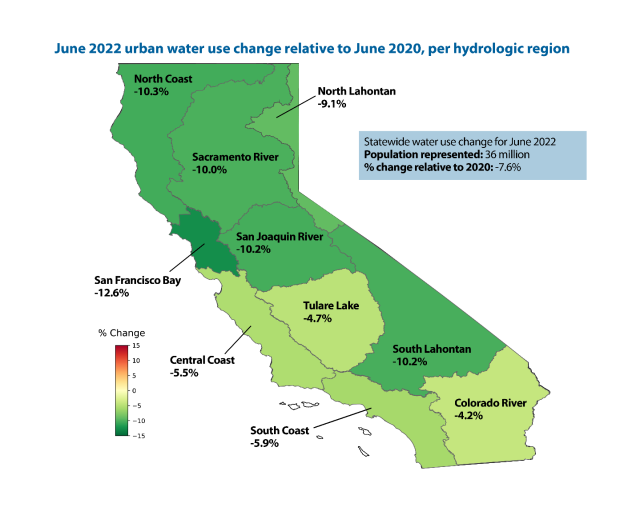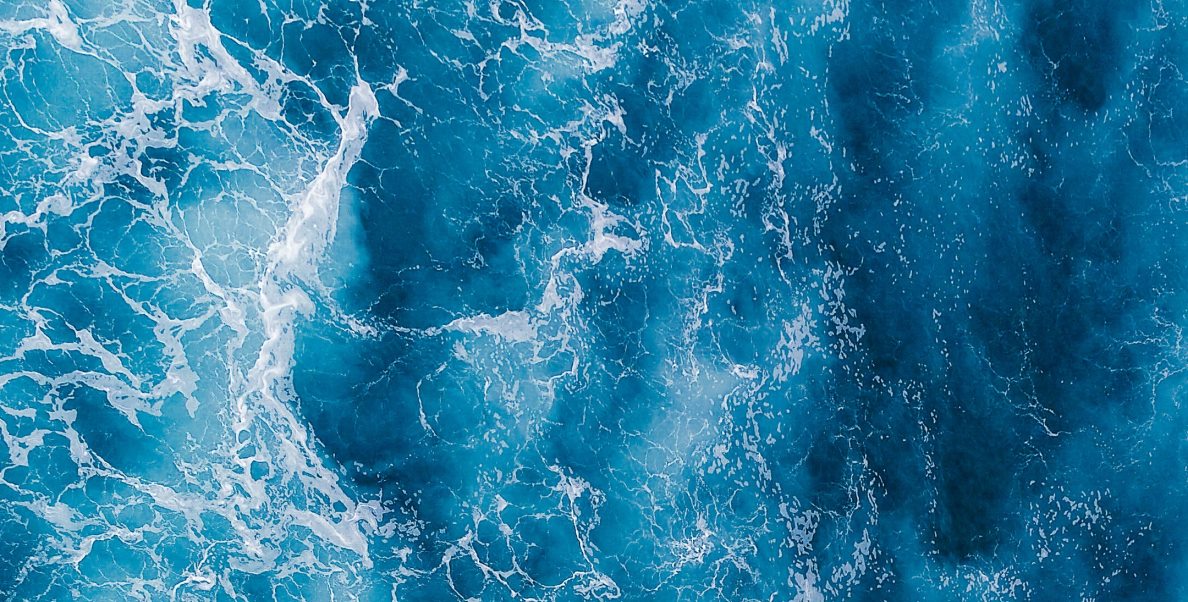 From the State Water Resources Control Board:
From the State Water Resources Control Board:
Statewide water use in June was 7.6% lower than in June 2020, and more than double the statewide savings in May (3.1%), putting California solidly back on track toward saving water. During the hot and dry summer, water use typically increases substantially because plants are thirstier. So, the fact that we saw more water savings in June suggests that aggressive actions taken by the state and by local suppliers are taking hold.

On July 29, Governor Gavin Newsom convened local water leaders for the second time in recent months to call for their continued action to drive down urban water use and help Californians make permanent changes to adapt to a hotter and drier future. At the meeting, the governor again urged leaders of the state’s largest urban water suppliers to continue local efforts to cut back water usage in the face of limited supplies due to extreme heat and dry weather. He also underscored the urgency of reporting monthly water use data as quickly as possible so the state can more effectively monitor progress in real time.
The State Water Board’s most recent conservation emergency regulation, which went into effect on June 10, bans irrigation of decorative grass on commercial, industrial, and institutional premises and requires suppliers to implement the water-saving actions that they included in Level 2 of their water shortage contingency plans. The ban is expected to save between 156,000 acre-feet and 260,000 acre-feet per year, the equivalent of water used by 780,000 households in a year. Water use prohibitions that were adopted in January 2022 also are still in effect.
Local Water Savings
In June 2022, all hydrologic regions saw some decrease in water use relative to June 2020. Many local utilities and suppliers set restrictions on residential outdoor watering enacted in June, reinforcing the impact of state-level actions.

June conservation data for the state’s largest regions signal that California is headed in the right direction, but sustaining water savings long-term must remain a local priority.
San Francisco Bay
- June: -12.6%
- May: -8.0%
- April: -0.2%
North Coast
- June: -10.3%
- May: -3.5%
- April: -14.9%
South Coast
- June: -5.9%
- May: -2.1%
- April: +26.1%
Central Coast
- June: -5.5%
- May: -1.9%
- April: +19.2%
Colorado River
- June: -4.2%
- May: +8.9%
- April: +40.4%
Negative %: water savings
Positive %: increase in water use
A Greater Sense of Urgency
Although we are now trending toward saving more water, we need to make up for lost ground from past months to meet the 15% statewide conservation goal. Doing so will require more water action on everyone’s part.
The state continues to experience a profound temperature-driven shift to drier conditions, known as aridification. Statewide average rain for January through March 2022 was under 2 inches compared to nearly 7 inches in January through March 2021, and compared to over 11 inches for the 30-year average.
Watering lawns and plants accounts for a significant amount of our water use, especially during summer months. Cutting down on outdoor irrigation — which can account for up to 80% of urban water use and is higher in the summer — is a critical to reaching our conservation goals. As California’s climate becomes hotter and dryer, it’s time to shift our perspective on what beautiful landscaping looks like.

The State Water Board’s mission is to preserve, enhance and restore the quality of California’s water resources and drinking water for the protection of the environment, public health and all beneficial uses, and to ensure proper allocation and efficient use for present and future generations.







